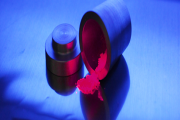 2019-04-17
2019-04-17
General Electric (GE), Current Lighting Solution and Consumer Lighting have accused Cree of using a technology on Cree’s LED product which infringes the patent of GE’s TriGain LED technology. The three companies filed a patent infringement lawsuit against Cree on April 11, 2019.
(Image: Pixabay)
lightED, an online magazine, posted the lawsuit document filed by GE. In the document, GE indicated that its TriGain LED technology, which is protected by U.S. Patent No 7,497,973 and No. 9,680,067, addresses solutions to improve LED col...
Continue reading →
 2018-10-12
2018-10-12
Lumenari, a U.S.-based material research company specializing in narrow-bandwidth LED phosphors, has announced it has raised US$ 3 million in Series A funding. The company will use the capital to complete an advanced lab-scale manufacturing line for its Emerald™ technology. Moreover, it plans to establish testing partnerships with packaged LED suppliers and pass initial qualification testing.
Continue reading →
 2018-10-12
2018-10-12
Taiwanese LED package company Everlight and Japanese LED producer Nichia have continued their dispute regarding the patent of YAG. On October 1st 2018, the Supreme Court of the United State has confirmed the invalidity of Nichia’s assertions about its YAG patents.
Continue reading →
2017-01-11
Phosphor export values of Changshu, a city located in Jiangsu Province in China, reportedly tumbled 55% Year-on-Year in 2016, based on data compiled by local customs agency, reported Chinese-language media China News Service.
Continue reading →
 2015-04-24
2015-04-24
A Michigan federal jury on Wednesday granted a favorable ruling to Everlight Electronics Corp. by declaring two of Nichia’s US LED patents to be invalid, according to Law360.
Continue reading →
 2014-06-24
2014-06-24
In cooperation with Dr. Peter Schmidt of Philips Technologie GmbH in Aachen, a team of researchers led by Prof. Dr. Wolfgang Schnick, who holds the Chair of Inorganic Solid-State Chemistry at LMU Munich, has developed a new material for application in light-emitting diodes (LEDs). “With its highly unusual properties, the new material has the potential to revolutionize the LED market,” says Schnick. The two teams report their results in the latest edition of Nature Materials.
Continue reading →
 2019-04-17
2019-04-17
 2018-10-12
2018-10-12
 2015-04-24
2015-04-24
 2014-06-24
2014-06-24